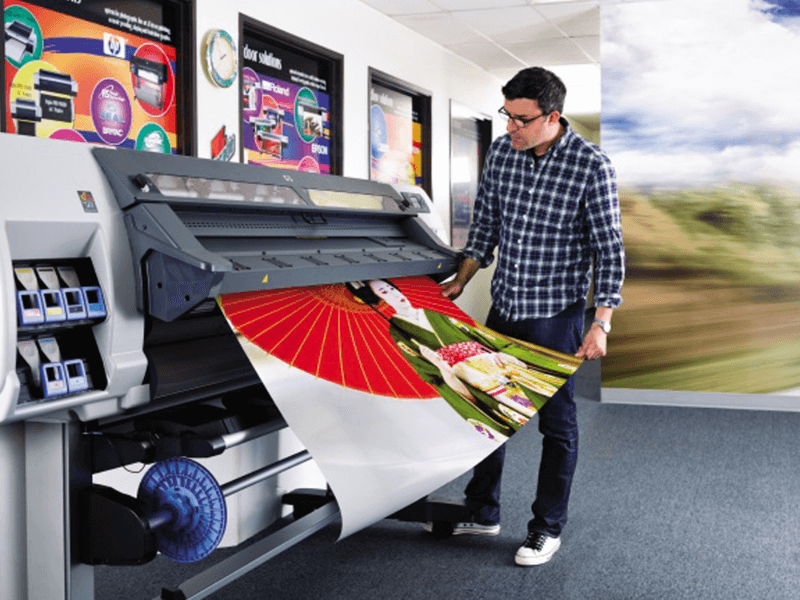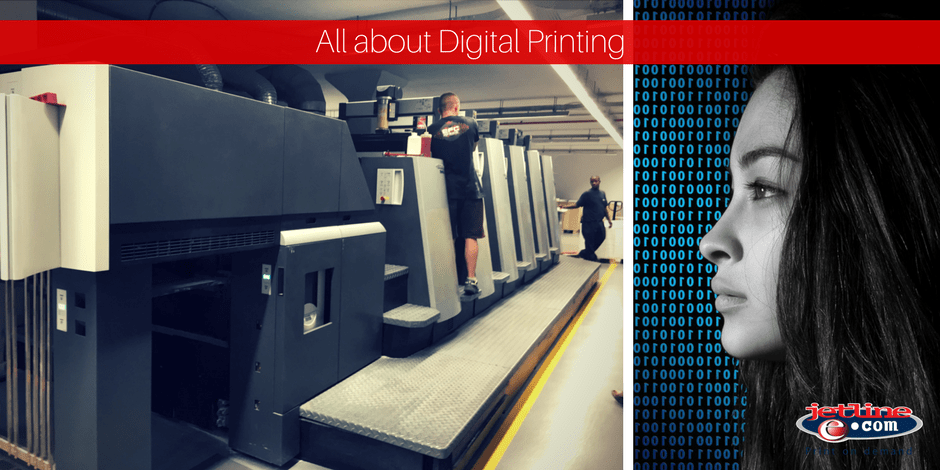How Digital Printing Can Improve Your Marketing Materials and ROI
How Digital Printing Can Improve Your Marketing Materials and ROI
Blog Article
Understanding the Relevance of Digital Printing in Today's Affordable Landscape
In the context of today's extremely competitive market, the relevance of digital printing can not be ignored. This technology not only assists in top quality and tailored outcomes however also offers the dexterity needed to adjust to rapidly altering consumer demands. Its cost-effectiveness and ecological benefits resonate with significantly conscientious consumers. As services look for to refine their methods, understanding how electronic printing incorporates right into more comprehensive marketing and functional goals is vital. What implications does this have for future company practices and consumer partnerships? The responses may redefine traditional approaches.
Benefits of Digital Printing
Digital printing offers numerous substantial advantages that make it a preferred selection for many services and individuals. One of one of the most notable benefits is its ability to generate high-grade prints with vibrant colors and complex details. This is specifically vital for advertising materials, where visual appeal can significantly influence customer engagement.
In addition, digital printing facilitates fast turn-around times, enabling organizations to respond quickly to market needs or advertising possibilities. Unlike conventional printing techniques that require comprehensive arrangement and longer production times, electronic printing enables prompt outcome, making it suitable for time-sensitive jobs.
Customization is another essential benefit of electronic printing. It sustains variable information printing, which permits individualized material in each print run. This attribute is especially beneficial for straight advertising and marketing projects, where customized messages can boost consumer connection and improve action prices.
Additionally, electronic printing decreases waste by enabling fine print runs without sustaining significant expenses. This ability not only sustains sustainability initiatives but likewise gives flexibility for organizations to test brand-new designs or products without devoting to huge amounts.
Cost-Effectiveness and Performance
The cost-effectiveness and performance of digital printing make it an attractive alternative for businesses aiming to optimize their printing processes. Unlike conventional printing methods, which usually require comprehensive arrangement and huge print runs to validate costs, digital printing permits shorter runs without compromising high quality. This adaptability dramatically minimizes waste and inventory expenses, allowing companies to print only what they need, when they require it.
In addition, electronic printing reduces the turnaround time for jobs. With automated procedures and on-demand abilities, firms can respond quickly to market needs, therefore improving their one-upmanship. The removal of costly pre-press phases, such as plate creation and long configuration times, better contributes to operational effectiveness.
Furthermore, electronic printing modern technologies have actually progressed, resulting in reduced per-unit costs in time. This cost reduction encourages businesses, specifically small to medium-sized enterprises, to accessibility top notch printing without frustrating monetary worries. Because of this, digital printing comes to be not just a practical selection yet additionally a strategic investment in a quickly developing marketplace. By leveraging effective and cost-effective digital printing remedies, organizations can streamline their procedures while keeping high requirements of top quality and responsiveness.
Personalization and Personalization
In today's affordable landscape, the capability to supply personalization and personalization in printing has ended up being a critical differentiator for businesses. Digital printing innovation allows organizations to create tailored items that meet particular customer needs and preferences. By leveraging variable information printing, companies can create materials that incorporate special message, photos, or designs for each recipient, enhancing the relevance and influence of advertising initiatives.
This capability not only fosters a deeper link with consumers but also enables companies to attract attention in a congested marketplace. For instance, tailored pamphlets, direct mail projects, and promotional products can lead to greater engagement rates and raised client loyalty. The flexibility of electronic printing assists in brief runs and quick turn-around times, allowing services to respond rapidly to market patterns or specific client demands.

Environmental Influence
As businesses Read Full Report increasingly concentrate on modification and customization to improve client interaction, focus must also turn to the ecological effects of printing practices. Digital printing offers a number of benefits in this context, mainly via its capability to decrease waste and reduce source intake. Unlike traditional printing methods that usually require substantial setup and produce significant excess products, electronic printing makes it possible for on-demand production. This capacity enables companies to print only what is needed, therefore lowering overproduction and associated waste.
In addition, advancements in digital printing technology have actually brought about making use of eco-friendly inks and substrates. Vegetable-based and water-based inks are becoming much more prevalent, reducing the exhaust of unpredictable organic substances (VOCs) and enhancing recyclability. In addition, lots of electronic printers are developed to be energy-efficient, eating less power during procedure contrasted to their conventional equivalents.
The change towards sustainable techniques is not simply a governing response; it is also a calculated organization choice. Companies that embrace eco responsible printing procedures can enhance their brand name image, attract eco-conscious consumers, and add to broader sustainability goals. In this competitive landscape, integrating ecological factors to consider into printing methods is important for long-lasting success and corporate obligation.
Future Patterns in Digital Printing
Arising innovations are poised to reinvent the landscape of digital printing, driving innovation and efficiency in the market. As advancements in expert system and machine discovering proceed to advance, the capacity to automate processes and enhance personalization will certainly end up being a foundation of electronic printing (digital printing). These technologies will certainly make it possible for printers to analyze consumer data, enabling for extremely individualized print items that accommodate certain market demands
In addition, the assimilation of 3D printing within conventional digital printing structures is anticipated to develop new avenues for item development. This convergence will assist in the production of detailed designs and models extra rapidly and cost-effectively than ever.
Sustainability will certainly likewise play a vital function in forming the future of electronic printing. As ecological issues rise, environmentally friendly inks and substratums are expected to obtain traction, advertising a greener printing process.
Additionally, the rise of on-demand printing will change the emphasis from large-scale production goes to smaller, much more versatile orders, decreasing waste and supply costs. Jointly, these fads signify a transformative period in digital printing, stressing adaptability, effectiveness, and ecological awareness in satisfying the needs of a developing industry.
Verdict

The cost-effectiveness and effectiveness of digital printing make it an eye-catching choice for services looking to optimize their printing procedures. Unlike traditional printing techniques, which often require considerable configuration and big print runs to Website justify prices, digital printing enables for much shorter runs without sacrificing high quality. The flexibility of electronic printing promotes short runs and fast turn-around times, enabling organizations to react quickly to market trends or private customer demands.
Unlike traditional printing approaches that typically need extensive setup and generate significant excess products, electronic printing makes it possible for on-demand production. As electronic printing continues to develop, its duty in driving development and operational efficiency will certainly be essential for businesses looking for to maintain a competitive side.
Report this page